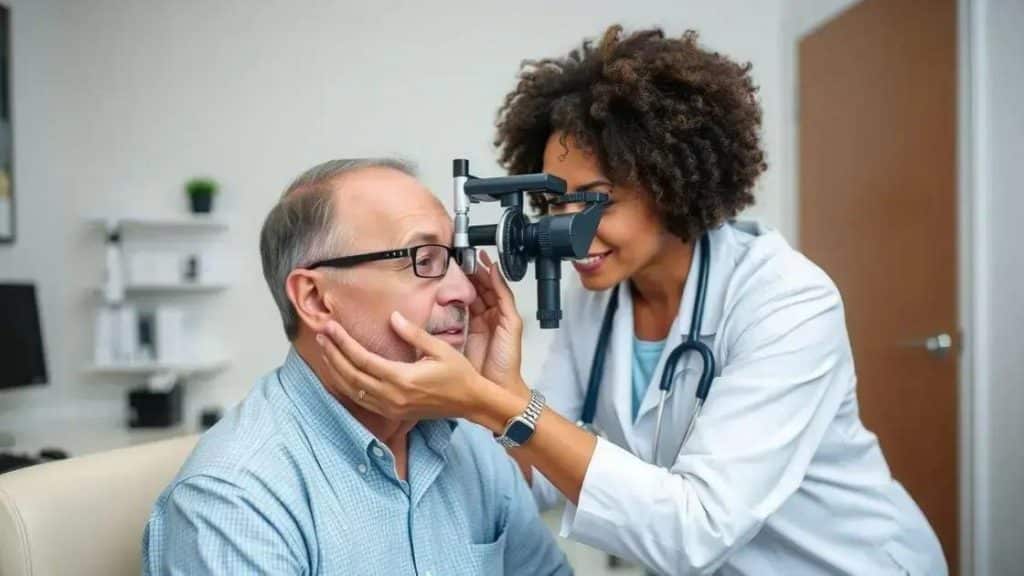Vision care support under Medicaid expansion: what to know

Vision care support under Medicaid expansion provides essential eye services, including exams and treatments, for eligible low-income individuals, enhancing access to necessary healthcare resources.
Vision care support under Medicaid expansion is reshaping healthcare access for many individuals. But what does this mean for you and your loved ones? Let’s dive into the essentials of this program and explore its implications.
Understanding Medicaid expansion
Understanding Medicaid expansion is crucial for many individuals seeking healthcare. This program aims to provide essential health services to low-income and underserved populations.
At its core, Medicaid expansion allows more people to qualify for Medicaid, thereby increasing access to healthcare coverage. Many states have adopted this expansion, which usually aligns with the Affordable Care Act (ACA).
Key Features of Medicaid Expansion
Through Medicaid expansion, several benefits are made available that enhance healthcare access.
- Increased coverage for low-income adults.
- Enhanced access to preventive services.
- Support for mental health care services.
- Lower uninsured rates in states that have expanded their programs.
When discussing Medicaid expansion, it’s important to note its impact on vulnerable communities. For instance, individuals with disabilities or chronic conditions often face significant barriers to healthcare access. The expansion helps mitigate these challenges by providing a broader coverage base.
Moreover, Medicaid expansion has proven to reduce overall healthcare costs by emphasizing preventive care. This means that people can receive routine check-ups and screenings without the burden of high out-of-pocket expenses.
Eligibility Criteria for Medicaid Expansion
Eligibility for Medicaid expansion varies by state, yet generally, it targets low-income adults who earn below a certain percentage of the federal poverty level. This increased eligibility widens healthcare access for many Americans who otherwise would not be able to afford necessary medical services.
State policymakers play a key role in determining whether to adopt Medicaid expansion and how to implement these crucial provisions. Understanding the local landscape is vital for residents hoping to benefit from the program.
Key benefits of vision care support

The key benefits of vision care support under Medicaid expansion cannot be overstated. With more people gaining access to essential vision services, this program impacts lives positively.
First, it enhances the overall health of participants by ensuring they receive necessary eye exams and treatment. Regular vision check-ups help detect serious conditions early, such as glaucoma or diabetes-related eye issues.
Access to Routine Care
With increased coverage, individuals now have better access to routine eye care services. This means more families can schedule annual eye exams without worrying about the cost. Basic services that can make a difference include:
- Comprehensive eye examinations.
- Prescription glasses and contact lenses.
- Screening for eye diseases.
- Follow-up care after diagnoses.
In addition to routine care, vision care support helps reduce healthcare costs for low-income families. By providing coverage for necessary eye treatments, financial burdens are lessened. People are less likely to incur high expenses related to untreated vision problems.
Improved Quality of Life
Furthermore, having access to vision care greatly improves the quality of life for many individuals. Good vision is essential for daily tasks such as reading, driving, and working. By improving vision health, people can engage more fully in their communities and lead more productive lives.
Moreover, addressing vision problems early emphasizes preventive care rather than reactive treatments. This shift in focus ensures that individuals maintain their eye health and overall well-being.
Eligibility criteria for vision care under Medicaid
Understanding the eligibility criteria for vision care under Medicaid is essential for those looking to access critical healthcare services. Different states have different rules, but there are common standards across the board.
Generally, to qualify for vision care under Medicaid, individuals must meet specific requirements based on income, age, and disability status. These factors play a vital role in determining who is eligible for this support.
Income Requirements
One of the primary criteria is income level. Most states require that applicants have an income below a certain percentage of the federal poverty level (FPL). This level often varies, so checking local guidelines is crucial. Typically, those eligible for vision care support earn:
- 100% to 138% of the FPL in expanded Medicaid states.
- Below 100% of the FPL in non-expansion states.
- Income from other sources like employment can affect eligibility.
In addition to income, age and residency status also matter. Generally, eligible candidates include children, pregnant women, and low-income adults. Moreover, individuals who are aged, blind, or disabled often qualify. Understanding how these categories apply can help potential candidates navigate the system more effectively.
Applying for Vision Care
Once you have determined eligibility based on income and demographics, the next step is applying for vision care benefits. During the application process, individuals may need to provide proof of income and identification documentation. It’s important to collect all necessary papers beforehand to streamline the process.
Certain states also offer simplified application procedures for those who may be confused or overwhelmed. Resources and support are available to help navigate the application process, making it easier to understand the various requirements.
Navigating the application process

Navigating the application process for vision care under Medicaid can seem overwhelming, but understanding the steps involved makes it easier. Many individuals may not know where to begin, but with the right information, they can proceed with confidence.
The first step is to gather necessary documents. Individuals typically need proof of income, residency, and identification. Having these documents ready can speed up the process significantly. Once you have everything in hand, it’s time to fill out the application.
Where to Apply
Applications can usually be submitted online, by mail, or in person. Each state has its own Medicaid office where applicants can seek assistance. Many also provide online portals that simplify the application procedure. Here are a few options for submitting applications:
- Online through the state’s Medicaid website.
- By phone, with a representative guiding you.
- In person at local Medicaid or community service offices.
After submission, it is essential to track the application status. Applicants can usually check this online or by contacting their local Medicaid office. Staying informed helps alleviate any worries about delays.
Common Challenges
While filling out the application, applicants may face challenges, such as unclear eligibility rules or difficult terminology. It’s okay to ask for help. Contacting community health organizations can provide additional guidance.
In addition, some states offer community workshops or information sessions to assist applicants. Engaging in these resources promotes a clearer understanding of the process and requirements.
FAQ – Frequently Asked Questions about Vision Care Support under Medicaid Expansion
What is vision care support under Medicaid expansion?
Vision care support under Medicaid expansion provides essential eye health services to low-income individuals, helping them access eye exams, glasses, and treatments.
Who is eligible for vision care under Medicaid?
Eligibility typically includes low-income adults, children, pregnant women, and individuals with disabilities, though specific criteria may vary by state.
How can I apply for vision care services?
You can apply for vision care services through your state’s Medicaid website, by mail, or in person at local Medicaid offices. Make sure to gather all necessary documents beforehand.
What benefits can I expect from vision care support?
Key benefits include access to vision exams, preventive care, prescription glasses, and treatment for eye conditions, all of which can significantly enhance your quality of life.





